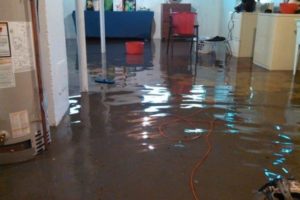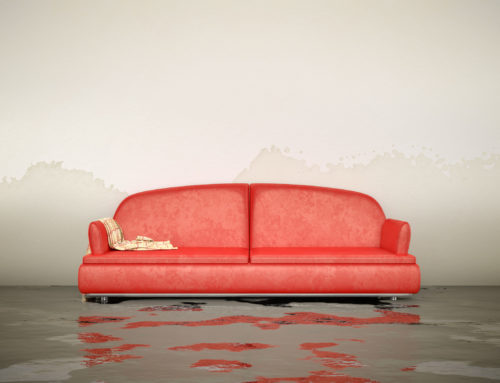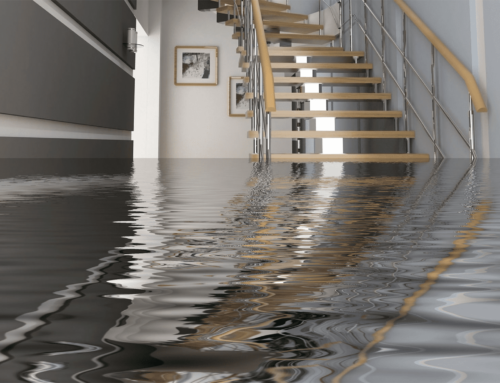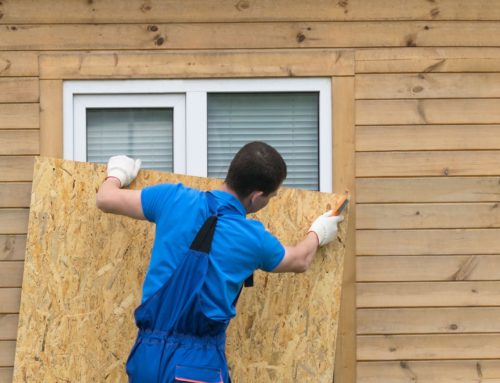If your home or business has experience water damage, for whatever reason, the amount and extent of damage is dependent on the cause and magnitude of the event. For example, if you had a leaky pipe under the sink, the effects would likely be minimal, whereas, if you’ve had flooding from a backed-up sewer, you’ll have a major problem.
That’s why it’s crucial to get immediate professional help with any water intrusion occurrence. The sooner the water is cleaned up and the area remediated, the less long-term damage you’ll have. You’ll also have a better chance of saving water-soaked furniture, carpets, rugs, clothing, and other items.
Severity of Water Damage
The amount of cleanup required, damages, and restoration needed depends on a few factors. Assessing the severity of the damage is important for determining what is needed to start water damage repair and water removal.
Water can come from outdoors, from excessive rain, melting snow, or due to cracks in the basement or a leaky roof. This water may or may not be contaminated, depending on what the water contains. Sump pump failures and sewer backups can have biohazardous waste that is dangerous to the health of those living or working inside the building.
1. Categories of Water Damage
The initial root of the water intrusion is one deciding factor on the amount of damage incurred. Plumbing leaks can be minor or major, but the water that comes from the leaks is usually not harmful unless it’s from an overflowing toilet. Broken hoses in appliances can cause flooding, but that water does not have any harmful bacteria in it.
There are basically 3 categories of water damage that determines the health effects if not promptly remediated.
- Category 1 is clean water, usually from malfunctioning appliances or overflowing sinks. This type of water is not a health hazard to humans.
- Category 2 is called gray water. It is contaminated with microorganisms that may cause illness. This water usually comes from broken toilets and sump pumps.
- Category 3 causes the worst type of water damage. Known as black water, it contains harmful bacteria that will cause disease. Sources of black water are sewage backups and contaminated standing water.
2. Classes of Water Damage
There are also classes of water damage that will impact repair options. The higher the class number, the more remediation and restoration will be required.
- Class 1 represents the least amount of damage which can be easily resolved. This is when the water is limited to a small area and minimal water is absorbed.
- Class 2 situations involve large amounts of water, absorption, and evaporation that usually affect an entire room. Drywall may need to be cut or removed. Hardwood floors will be damaged.
- Class 3 water damage is significant. It damages drywall and other major materials and furnishings, requiring extensive demolition and restoration.
- Class 4 refers to water damage to porous materials that are harder to dry out, like stone, concrete, and brick. Special methods and more time are involved in effectively remediating these situations.
3. Timeliness of Water Cleanup
Damages from water issues can be mitigated and resolved if addressed quickly. The amount of damage caused by water can depend on how quickly the impacted area is cleaned up. Here are some examples of how fast some damages can occur:
- Within minutes: Contamination begins to spread. Moisture-sensitive furniture will begin to turn white-ish and stain saturated carpeting,
- Within hours. Furniture begins to swell. Normal household odors worsen because of excess humidity. Non-colorfast fabrics start to bleed.
- Within days. Mold starts to grow within 48 hours. Wood will warp and cup, making some wood floors unsalvageable. Paint and wallpaper will start to blister and peel.
- Within weeks. Mold will permeate materials and destroy them. Occupants will begin having allergic reactions due to rampant mold growth. The building structure may be damaged to the point that gutting is necessary, requiring full evacuation.
Get Quick Cleanup to Mitigate Damages
The speed with which you address any water damage is a critical factor in reducing the damage that results. When water and moisture remains indoors, mold will begin to grow, which exacerbates the problem. More time (and money!) will be required to clean up the water, repair damages, and restore the property to a dry and healthy environment.
If you experience water damage, don’t wait to get help. Call PureOne Services of Central Minnesota for immediate water damage cleanup. Because we know the urgency needed, we offer 24/7 emergency service. Hopefully, we get there before mold begins to grow; if not, we can help you get rid of the mold too. Give us a call to discuss your options.



